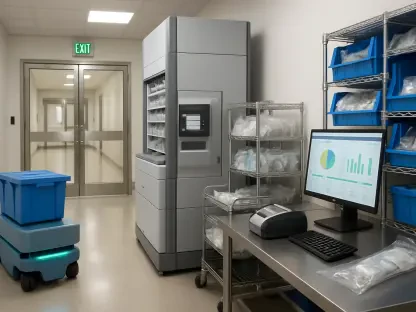The U.S. Department of Health and Human Services (HHS) is set to undergo significant transformation due to massive layoffs impacting critical health agencies like the FDA, CDC, and NIH. The planned reduction of the workforce from 82,000 to 62,000 employees presents logistical challenges, making it imperative for HR to play a pivotal role in restructuring the organization for optimal functionality.
A Centralized HR System: Efficiency vs. Chaos
A central theme in the reshaping of HHS is the move towards centralizing HR functions to create a leaner and more cost-effective agency. This centralization is designed to save $1.8 billion annually by reducing redundancy and streamlining operations. However, this effort is not without significant risks. HR professionals must balance the benefits of increased efficiency against potential operational chaos, especially in the context of a public health institution where the stakes are high and the workforce plays a crucial role in meeting health mandates.
The tension between streamlined efficiency and operational chaos is further complicated by the challenge of managing a workforce that is now smaller and potentially overburdened. A central HR system, while offering cost savings, might stretch the capabilities of the remaining staff to meet the public health obligations effectively. HR must ensure that resources are allocated wisely and that the workforce remains capable of fulfilling critical health initiatives, all while navigating the complexities introduced by centralization.
Flawed Execution: Badge Deactivation Fiasco
One of the most poignant illustrations of the flawed execution of these layoffs is the badge deactivation fiasco. In this incident, employees discovered their termination through non-functional federal ID badges rather than receiving formal notifications. This oversight underscored the necessity for impeccable execution and synchronization of payroll, benefits, and terminations across the remaining employees. The mismanagement here indicates a larger issue of communication and coordination deficiencies within the HR processes during the layoffs.
HR’s challenge lies in implementing efficient yet agile processes, particularly when it comes to the recruitment and onboarding of specialized roles. Proper communication channels must be established to ensure that the remaining employees are well-informed and supported throughout the transition. Additionally, maintaining morale and trust among current staff requires transparent and humane handling of terminations, including clear timelines and severance support. An efficient HR system should be capable of managing these critical transitions without compromising the integrity of the workforce.
Ripple Effects on Specialized Programs
The mass job cuts at HHS have effects that extend beyond the administrative boundaries of Washington D.C., significantly impacting specialized programs such as the Administration for Community Living (ACL) and the Low-Income Home Energy Assistance Program (LIHEAP). These programs provide essential services to vulnerable populations such as rural seniors and low-income families. With the ACL seeing a 40% reduction in its staff, HR’s role transcends internal operations to also encompass the external ramifications of these layoffs, ensuring the continuity of vital services.
The ripple effects highlight the necessity for strategic resource allocation. HR must ensure that programmatic functions for vulnerable populations are preserved despite the smaller workforce. This involves advocating for and reallocating resources to maintain the operations of critical programs. Effective HR management can mitigate the adverse impacts on these specialized programs by ensuring that the needs of vulnerable communities are met, even amidst restructuring and downsizing efforts.
Strategies for HR Professionals to Manage Crisis
To navigate the crisis effectively, HR professionals need to adopt a multipronged approach. First, building adaptive systems through standardization and data-driven workforce analytics can help swiftly identify and address talent shortages. Leveraging technology and data provides insights into workforce dynamics, enabling proactive measures to fill skill gaps and redistribute workload efficiently. A standardized approach ensures consistency in processes, which is critical for maintaining functionality.
Second, maintaining employee morale during the transition is crucial. Implementing transparent communication channels, offering severance packages, providing retraining programs, and setting clear timelines are essential strategies. Transparency fosters trust and helps mitigate the uncertainty and anxiety that typically accompany large-scale layoffs. HR must support the remaining workforce by clearly outlining the future roadmaps, thereby ensuring that employees are informed and engaged throughout the transition.
Future-Proofing Health Agencies with Innovative Recruitment
The U.S. Department of Health and Human Services (HHS) is slated for a substantial overhaul, driven by extensive layoffs that will greatly impact key health agencies such as the FDA, CDC, and NIH. This major workforce reduction, cutting down from 82,000 to 62,000 employees, poses significant logistical challenges. Consequently, it is vital for Human Resources (HR) to take an essential role in reorganizing the department to ensure it continues to operate efficiently and effectively.
These changes underscore the need for strategic planning to redistribute work and resources, which will require HR to implement new protocols, training, and support systems. Coordination between agencies must be intensified to maintain the same level of service and public health protection, despite the reduced staff. Furthermore, HR will need to manage employee morale and navigate potential legal and ethical considerations associated with such significant downsizing. Overall, the HHS aims to reorganize while preserving its mission to safeguard the health of American citizens.









